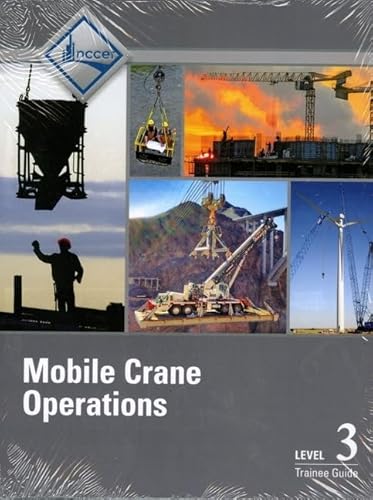Ever feel like your phone bill is a puzzle with too many pieces? You’re not alone! Choosing a single line mobile plan can feel overwhelming. There are so many choices, and it’s tough to know which one is truly the best for you. You want good service without paying too much, and figuring out data limits and perks can be confusing.
This is where we come in! We know that finding the perfect single line plan shouldn’t be a headache. That’s why we’ve put together this easy-to-understand guide. By reading on, you’ll learn what to look for, how to compare different plans, and how to find the one that fits your needs and your wallet perfectly. Get ready to say goodbye to confusion and hello to a plan you’ll love!
Our Top 5 Single Line Mobile Plans Recommendations at a Glance
Top 5 Single Line Mobile Plans Detailed Reviews
1. Total by Verizon $60 No-Contract Single-Device Monthly Plan Unlimited Talk
Rating: 8.7/10
Looking for a phone plan that gives you a lot for your money? The Total by Verizon $60 No-Contract Single-Device Monthly Plan offers unlimited talk, text, and data, plus a generous 20GB of hotspot data. You also get a $10 international calling credit, making it easy to connect with loved ones abroad. This plan even includes Disney Premium+ (no ads) and uses Verizon’s super-fast 5G Ultra-Wideband network for great coverage.
What We Like:
- Unlimited talk, text, and data for all your needs.
- 20GB of hotspot data lets you share your connection.
- $10 international calling credit is a nice bonus for staying in touch overseas.
- Talk and text to 5 chosen countries and roam in Canada and Mexico.
- Total Spam Filter helps block unwanted calls.
- Disney Premium+ (no ads) is included for free entertainment.
- Works on Verizon’s impressive 5G Ultra-Wideband network.
- Easy to manage your service – upgrade or stop anytime.
- Compatible with many Total by Verizon phones, including 5G options.
- Comes as a physical card, making it simple to activate.
What Could Be Improved:
- The 20GB hotspot data might not be enough for heavy users.
- International calling credit is a starting point, but larger amounts might be needed for frequent international calls.
- The “5 countries” for international talk and text is a specific limit.
This plan is a solid choice for anyone who wants a comprehensive and affordable mobile experience. You get plenty of data, great features, and access to a strong network.
2. Mobile Crane Operations Trainee Guide
Rating: 8.6/10
The Mobile Crane Operations Trainee Guide, Level 3 is a comprehensive training manual designed to equip aspiring mobile crane operators with essential knowledge and skills. It covers critical aspects of crane operation, from understanding load charts to advanced lifting techniques.
What We Like:
- Extensive coverage of load charts (35 hours) ensures a deep understanding of safe lifting capacities for various crane setups.
- Detailed sections on lift planning (30 hours) prepare trainees for complex and critical lifts.
- Clear instructions for assembling and disassembling telescopic and lattice booms (20 hours each) build practical skills.
- Dedicated module on hoisting personnel (20 hours) emphasizes safety and regulatory compliance.
- Advanced operational techniques (20 hours) introduce trainees to challenging scenarios like multi-crane lifts and cold-weather operation.
What Could Be Improved:
- The guide could benefit from more visual aids like diagrams and real-world photos to illustrate complex concepts.
- While comprehensive, the sheer volume of information might be overwhelming for absolute beginners without an instructor.
This guide is an invaluable resource for anyone serious about becoming a skilled and safe mobile crane operator. It provides the foundational knowledge needed to tackle the challenges of Level 3 operations.
3. Design Plans for Mobile Home Blueprints – 20’x7′ with 147sqft Living Space
Rating: 9.1/10
Dreaming of a tiny home on wheels? These Design Plans for Mobile Home Blueprints offer a fantastic starting point for your mobile living adventure. This compact 20’x7′ design packs a lot into its 147 square feet of living space. You get a smart layout for a bed area, a functional kitchen, a convenient toilet and shower, and even a dedicated desk space. It’s all about making the most of every inch!
What We Like:
- Complete set of plans: You receive detailed 3D isometric views, interior views, a clear floor plan, roof plan, and helpful sections.
- Visual aids: The plans include elevations and schedules for windows and doors, making it easy to visualize and plan your build.
- DIY friendly: These blueprints are perfect for anyone who loves to build and wants to create their own unique mobile living space.
- Efficient use of space: The 147 sqft layout is cleverly designed to include all the essentials for comfortable living.
What Could Be Improved:
- Specific material suggestions could be added to the plans for even more guidance.
- A cutting list for lumber might be a helpful addition for some DIYers.
These plans provide a solid foundation for building your dream tiny mobile home. Get ready to bring your cozy and portable living space to life!
4. Generic Tiny Mobile Home Plans: 8′ x 19.5′ – 156sqft Living Space
Rating: 9.4/10
Dreaming of a cozy, compact home on wheels? These Generic Tiny Mobile Home Plans offer an exciting solution. This design is for an 8′ x 19.5′ tiny mobile home, giving you a total of 156 square feet of living space. It’s a smart way to build a functional home that you can take anywhere.
What We Like:
- The plans include everything you need for a comfortable living space. You get a dedicated bed area, a practical kitchen, and a washroom with a shower.
- Detailed 3D interior views and a clear floor plan help you easily imagine what your home will look like and how everything fits.
- You’ll find a roof plan, elevations, and sections. These are important for making sure your home is built strong and stays safe.
- An electrical plan is included. This makes setting up your wiring much simpler and less confusing.
- The trailer plan is a great bonus. It ensures your tiny home is ready for mobile living.
What Could Be Improved:
- While the plans are comprehensive, they are generic. You might need to adapt them for specific local building codes or your personal style.
- The 156 square feet is cozy, but it might feel tight for more than one or two people, especially for extended periods.
These plans provide a solid foundation for building your own tiny mobile home. They offer a good balance of detail and flexibility for aspiring tiny home dwellers.
5. Climbing Mount Laurel: The Struggle for Affordable Housing and Social Mobility in an American Suburb
Rating: 8.6/10
This used book, “Climbing Mount Laurel: The Struggle for Affordable Housing and Social Mobility in an American Suburb,” offers a deep dive into a real-life challenge many communities face. It explores how finding affordable places to live can make it hard for people to move up in life. The book tells the story of a town called Mount Laurel and its fight to create more housing options for everyone. It’s a thought-provoking read that sheds light on important social issues.
What We Like:
- Thought-provoking exploration of a critical social issue.
- Provides real-world examples and case studies from Mount Laurel.
- Offers insights into the challenges of social mobility and housing.
- This is a used book in good condition, meaning you get a valuable resource at a potentially lower price.
What Could Be Improved:
- As a used book, there might be minor signs of wear, though it’s described as good condition.
- The subject matter can be complex and might require careful reading to fully grasp.
This book is an excellent resource for anyone interested in understanding the complexities of housing and social equality. It’s a compelling read that encourages readers to think about solutions.
Your Guide to Single Line Mobile Plans
Choosing the right mobile plan can feel a bit overwhelming. But don’t worry! This guide will help you understand single line mobile plans and find the best one for you. We’ll cover what makes a plan great, what to consider, and how to get the most out of it.
What is a Single Line Mobile Plan?
A single line mobile plan is a phone plan designed for just one person. It includes a set amount of data, talk minutes, and text messages for that one phone number. Think of it as your personal phone service. Many people prefer single line plans because they are often simpler and cheaper than family plans.
Key Features to Look For
When you’re shopping for a single line plan, keep an eye out for these important features:
- Data Allowance: This is how much internet you can use each month. If you stream lots of videos or play online games, you’ll need more data. If you mostly use Wi-Fi, a smaller data plan might be fine.
- Talk and Text: Most plans offer unlimited talk and text. This means you can call and message as much as you want without extra charges.
- Coverage: It’s super important to check if the mobile provider has good service in the places you go most often. This includes your home, work, and any other frequent spots.
- Hotspot Capability: Some plans let you share your phone’s internet with other devices, like laptops or tablets. This is called a mobile hotspot.
- International Use: If you travel a lot or call people in other countries, see if the plan includes international calling or roaming.
Important Materials (What to Consider)
While mobile plans aren’t physical “materials” like a phone, there are important things to think about:
- Provider Reputation: Research the mobile provider. Read reviews from other customers to see if they are reliable and offer good customer service.
- Contract Length: Some plans require you to sign a contract for a certain period. Others are month-to-month, giving you more flexibility.
- Hidden Fees: Always ask about any activation fees, upgrade fees, or other charges that might not be obvious.
- Promotions and Discounts: Look for special offers or discounts that might be available, especially if you’re a new customer.
Factors That Improve or Reduce Quality
Several things can make your mobile plan experience better or worse:
- Data Speed: Faster data speeds mean quicker downloads and smoother streaming. This is usually tied to the network technology (like 4G or 5G).
- Network Reliability: A reliable network means fewer dropped calls and consistent internet access. This is a big part of provider reputation.
- Customer Service: When you have a problem, you want quick and helpful support. Good customer service can save you a lot of frustration.
- Throttling: Some plans slow down your internet speed after you use a certain amount of data. This can be annoying if you need fast internet.
User Experience and Use Cases
A single line mobile plan is for anyone who needs their own phone service.
- Students: A simple plan with enough data for social media and schoolwork is perfect.
- Young Professionals: A plan with good data for work emails and on-the-go browsing is essential.
- Seniors: A plan with unlimited talk and text and a reasonable data allowance is often all that’s needed.
- Travelers: Look for plans with good international options if you travel frequently.
The user experience is all about how easy it is to use your plan. This includes simple billing, easy ways to check your data usage, and a straightforward setup process. A good plan lets you focus on using your phone, not worrying about your service.
Frequently Asked Questions (FAQ)
Q: What is the main difference between a single line plan and a family plan?
A: A single line plan is for one person, while a family plan is for multiple people sharing data and minutes.
Q: Do I need a contract for a single line plan?
A: Not always. Many providers offer month-to-month plans without contracts.
Q: How much data do I really need?
A: It depends on your usage. If you stream a lot, aim for 10GB or more. If you mainly use Wi-Fi, 2-5GB might be enough.
Q: What is “unlimited data”?
A: Unlimited data means you can use as much data as you want, but sometimes speeds can slow down after a certain amount is used.
Q: Can I keep my current phone number?
A: Yes, most providers allow you to “port” your existing number to their network.
Q: What is 5G?
A: 5G is the latest generation of mobile network technology. It offers faster speeds and better performance than 4G.
Q: How do I check if a provider has good coverage in my area?
A: Most providers have coverage maps on their websites. You can also ask friends or neighbors about their experience.
Q: What happens if I go over my data limit?
A: Some plans will stop your data until the next billing cycle, while others might charge you extra or slow down your speed.
Q: Are there any hidden fees I should watch out for?
A: Look for activation fees, upgrade fees, and international usage charges.
Q: How important is customer service for a mobile plan?
A: It’s very important. Good customer service makes it easier to solve problems and manage your plan.
In conclusion, every product has unique features and benefits. We hope this review helps you decide if it meets your needs. An informed choice ensures the best experience.
If you have any questions or feedback, please share them in the comments. Your input helps everyone. Thank you for reading.
Hello, I’m Muzammil Siddiqui, the mind behind ChairsFly.com.. With a deep passion for chairs and a wealth of expertise, I created this platform to share my insights, experiences, and knowledge about everything chair-related. From ergonomic solutions to stylish designs, my goal is to guide you in finding the perfect seat for your needs. Let’s embark on this journey of comfort and elegance together!





